Recent Storm Damage Posts
Rising Waters, Rising Resilience: Recovering from a Flooded Basement
1/12/2024 (Permalink)
A flooded basement can be a homeowner's nightmare, causing damage to property, possessions, and the structural integrity of your home. However, swift and informed action can significantly mitigate the aftermath of a basement flood. In this blog, we'll explore the essential steps homeowners can take to recover and restore their living spaces after a basement flood.
Ensure Safety First
Before entering a flooded basement, prioritize safety. Turn off the electricity to the affected area to avoid the risk of electric shock. If the water level is substantial, wait until it recedes before attempting any cleanup.
Understanding the source of the water is crucial for effective remediation. Whether it's from heavy rainfall, a burst pipe, or a sewer backup, knowing the origin helps in implementing appropriate cleanup measures.
Remove Water Quickly
The sooner you can remove standing water from the basement, the better. Use a pump, wet vacuum, or a professional water restoration service to extract water efficiently. Be cautious and avoid standing in the water during this process.
Before beginning the cleanup process, document the extent of the damage by taking photographs and videos. This documentation will be valuable for insurance claims and professional assessments.
Dispose of Contaminated Items
Items that have come into contact with contaminated water, such as sewage or floodwaters, may pose health risks. Dispose of porous materials like carpets, insulation, and some types of furniture. Non-porous items can often be disinfected and salvaged.
Allow fresh air to circulate through the basement by opening windows and doors. Use fans and dehumidifiers to expedite the drying process. Mold and mildew thrive in damp conditions, so prompt drying is crucial.
Clean and Disinfect
Clean all surfaces that came into contact with floodwater using a mixture of mild detergent and water. Disinfect with a solution of one cup of bleach to five gallons of water. This helps prevent the growth of bacteria and mold.
Once the basement is dry, inspect for structural damage. Check walls, floors, and the foundation for any signs of compromise. Address issues promptly to prevent further deterioration. Before restoring power to the basement, have a professional electrician inspect and assess the electrical systems. Water damage can compromise wiring, posing a serious safety hazard.
Contact Your Insurance Company:
Notify your insurance company as soon as possible to initiate the claims process. Provide them with documentation of the damage and keep a record of all communications related to the claim. Depending on the severity of the flood, consider consulting with professionals for a comprehensive assessment. Restoration experts can identify hidden damage, assess structural issues, and provide guidance on necessary repairs.
Take preventive measures to avoid future basement floods. Consider waterproofing solutions such as installing a sump pump, applying sealants to walls, and ensuring proper drainage around your home.
Review and Update Emergency Plans
Use the experience of a basement flood to review and update your emergency plans. Identify potential vulnerabilities in your home and take steps to mitigate them for future storm events.
Dealing with a flooded basement can be emotionally taxing. Seek support from friends, family, or professionals if needed. Sharing the burden of recovery can help alleviate stress and foster a smoother restoration process.
Recovering from a flooded basement is a challenging but manageable process with the right approach. By prioritizing safety, acting promptly, and seeking professional guidance when needed, homeowners can restore their living spaces and strengthen their homes against future flooding. Remember, resilience is not just about recovering; it's about learning and preparing for what lies ahead.
Mitigating Coastal Erosion in the Northeast: Effective Strategies for Home and Property Owners
9/11/2023 (Permalink)
The Northeastern coastline is known for its breathtaking beauty, but it is also vulnerable to coastal erosion, which threatens homes and properties. Coastal erosion, the gradual wearing away of land by natural forces like waves and tides, can cause significant damage and disrupt communities. In this blog, we'll delve into the impacts of coastal erosion, explore effective mitigation strategies, and discuss restoration efforts that home and property owners can adopt to safeguard their assets and the environment.
Understanding the Impact of Coastal Erosion
Coastal erosion is a natural process, but factors like climate change and human activities have accelerated its effects. For homeowners and property owners in coastal areas, erosion can lead to loss of valuable land, damage to structures, and risks to safety. Understanding the causes and consequences of coastal erosion is the first step in developing effective strategies to mitigate its impact.
Implementing Soft Engineering Solutions
Soft engineering solutions are environmentally friendly methods that work with natural processes to combat coastal erosion. Home and property owners can explore options like beach nourishment, where sand is added to replenish eroded beaches, and dune restoration, which strengthens natural barriers against erosion. These strategies not only protect properties but also promote biodiversity and preserve the coastal ecosystem.
Building Seawalls and Revetments
Seawalls and revetments are hard engineering structures that create barriers to prevent wave energy from eroding the coast. While they offer effective protection, their construction should be carefully planned to minimize negative impacts on neighboring properties and habitats. Consulting with coastal engineers and obtaining necessary permits is crucial to ensure proper installation and maintenance.
Utilizing Breakwaters and Groynes
Breakwaters are offshore structures designed to absorb wave energy before it reaches the coast. Groynes are barriers built perpendicular to the shoreline, trapping sand and promoting beach stability. Integrating breakwaters and groynes can be effective in reducing erosion and maintaining beaches, benefiting both homeowners and the coastal environment.
Emphasizing Natural Vegetation
Planting and maintaining coastal vegetation, such as salt-tolerant grasses and native plants, helps stabilize soil and reduce erosion. Home and property owners can establish vegetated buffers and participate in community-led initiatives to restore coastal habitats. Preserving natural vegetation also enhances the beauty and ecological value of the coastal landscape.
Coastal erosion is a pressing concern for home and property owners in the Northeast, but it is a challenge that can be met with strategic planning and collective action. By understanding the causes and consequences of erosion, exploring soft and hard engineering solutions, and prioritizing natural conservation efforts, homeowners can take proactive steps to protect their properties and preserve the coastal environment. Adopting sustainable practices and engaging in community initiatives will contribute to the long-term resilience of coastal communities and ensure that the beauty and value of the Northeastern coastline endure for generations to come.
Protect Your Home During a Flood
2/11/2023 (Permalink)
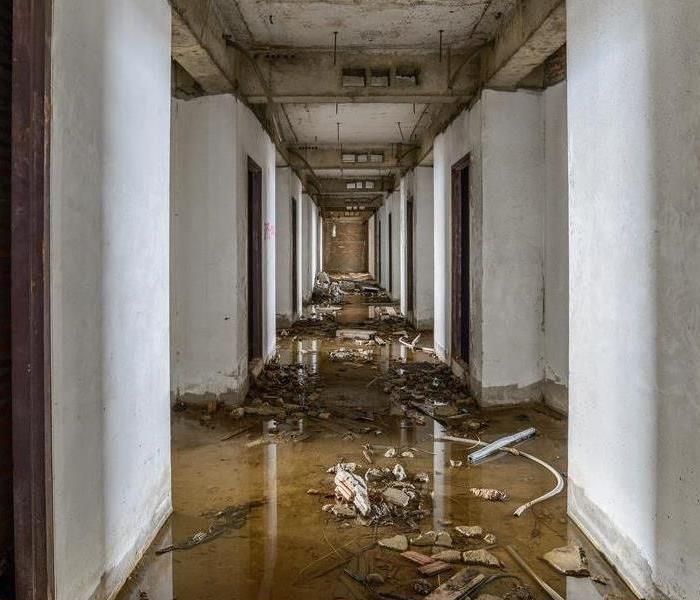 When flood water damage occurs in your home or business, give SERVPRO of Providence a call today!
When flood water damage occurs in your home or business, give SERVPRO of Providence a call today!
You might think of your home as a safe haven, but it can also be a liability. If you live in an area that's prone to flooding, you may want to make sure your property is protected against water damage. Ensuring that the exterior of your home is sealed and proper drainage for heavy rainfall is crucial to saving your home from flood damage.
Seal your foundation.
Seal any cracks in your foundation. This will keep large amount of rainfall from seeping through into your crawlspace causing water damage under your home. Seal cracks in basement walls, garage walls, and floors to keep the water away from potential personal belongings. Last repair any leaks from plumbing or appliances that you may have already seen potential for flood and water damage.
Maintain drainage areas.
The drainage areas around your home should be kept clear of debris and maintained. A good rule of thumb is that any drainage area that is less than 6 feet wide should be sloped away from the house, with a grade of at least 1/4 inch per foot. If there is not enough room for this slope, then fill it with gravel to prevent water from pooling in low spots and causing damage to foundations or flooring inside the house.
Gravel can also help absorb some of the shock waves caused by lightning strikes on metal roofs. It's important to clean out these areas regularly so they don't become clogged up with leaves and other debris that could cause flooding if left unattended over time.
Install a sump pump.
A sump pump is a great way to keep your home safe from flooding. These devices can be installed in basements or other areas of the home, and they can be installed by a professional or DIY. Sump pumps need to be maintained regularly so that they work when needed most, but if you want to install one yourself, here's what you need:
- A sump basin (the container where water collects)
- A check valve (prevents backflow)
- An overflow pipe with a float switch attached
- A submersible pump
Water is fast! Water can cause structural damage, as well as interior damage. In some cases where there has been severe flooding in homes it's because they didn't have any kind of backup system installed, these alarms alert you when there is a large amount of water fall helping you to escape from your home or property before you can't.
Remember that prevention is always the best option, so if anything seems suspicious in your neighborhood (like standing water), report it immediately! Give SERVPRO of Providence a call at the first sign of water damage from flood waters in your home or business.
4 Types of Storm Damage
1/20/2023 (Permalink)
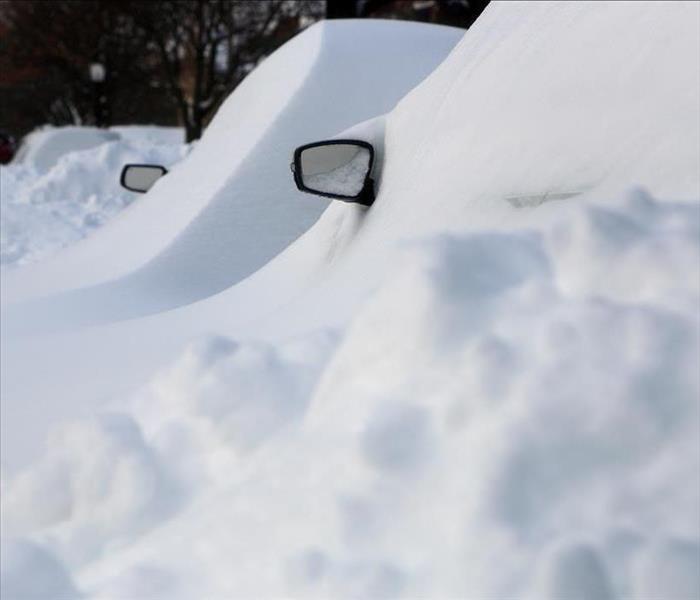 A storm can cause significant damage to a home, both inside and outside.
A storm can cause significant damage to a home, both inside and outside.
A storm can cause significant damage to a home, both inside and outside. A storm can tear down trees, break windows, and cause water damage from flooding. It might also blow away a portion of your roof or siding. This can be very dangerous since it exposes your home to the elements. To make sure that you’re prepared for any kind of storm damage or debris removal service after a storm hits your area, we are going to discuss some possible storm damage you could experience at your Providence home or business.
Snowstorm Damage
A snowstorm can cause damage to homes and cars. If a roof is damaged, you may need to replace it, which can be expensive. Gutter and downspout systems wear out over time and may need to be replaced if they're damaged during a storm. The same is true of siding, windows, and doors; these are all important parts of your home's exterior as well as its interior integrity. Finally, snow accumulation on decks or porches can lead to structural failure if the weight becomes too great for them to support themselves properly anymore.
Lightning Damage
Lightning strikes can cause a variety of damage. Lightning-related fires are the most common type of storm damage. If lightning strikes your roof or any other part of your home, the electrical current can burn through wiring and ignite insulation. It's important to have a professional assess your roof after a storm; if there is any sign of fire or smoke damage, they will be able to find ways to repair it quickly before the damage spreads further.
Hail Damage
Hail damage can be a costly inconvenience, but it’s also quite common. This type of weather is typically accompanied by thunderstorms that bring lightning and heavy rain. Hailstones are small ice balls that fall from the sky in a storm cloud when the pressure in the clouds gets low enough for water droplets to freeze.
Hail can cause roof damage and broken windows as well as cracked exterior walls if it hit hard enough to break through glass or siding material. If your home has been damaged by hail, you may have to replace shingles on your roof or other materials depending on what was damaged or destroyed during such an event.
Tornado Damage
A tornado is a violently rotating column of air that extends from the base of a thunderstorm to the ground. The strong winds caused by a tornado can cause severe damage, including roof damage and broken windows. A tornado can also cause structural damage, flooding and water damage, fire damage, mold damage, or even loss of life.
If you have been affected by any of these types of storm damage — or any other kind — it's important that you make sure your home has been properly inspected by an experienced contractor before you bring anyone back into the house after repairs are complete.
Hire a Professional
We recommend hiring a professional restoration company like SERVPRO of Providence if you need repairs after a storm. We will make sure to assess the damage thoroughly, come up with a reasonable plan, and get you back to normal as quickly as possible. No matter what kind of damage you have, it’s important to seek out professional help so that your house or business can be restored quickly and properly.
Does Your Business Need a Flood Cut?
7/23/2022 (Permalink)
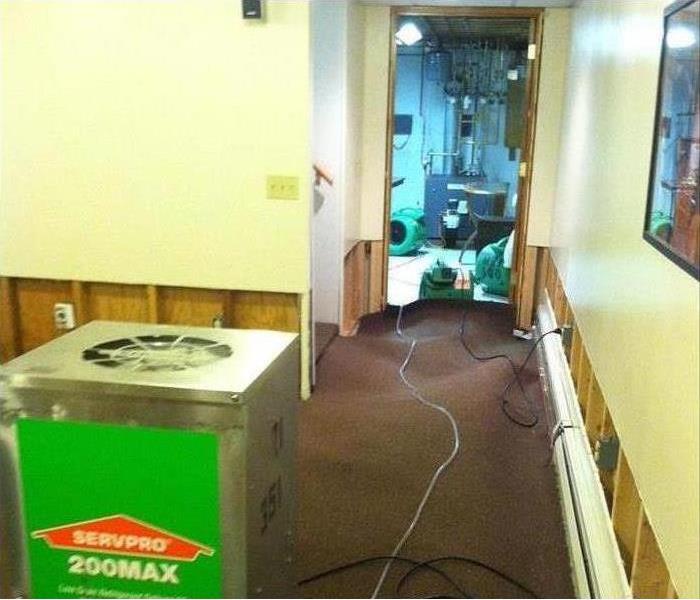 Flood cut in a Providence, RI business
Flood cut in a Providence, RI business
Flooding at your Providence, RI, business may require intensive restoration efforts in order to get back to pre-flood condition. In addition to drying out the area, replacing carpet and other remediation tasks, a flood cut may need to be made in order to fully address the water damage.
What Is A Flood Cut?
A flood cut is simply the removal of drywall approximately one foot above the visible waterline. This is done because water tends to wick upward through the wall.
When Are Flood Cuts Necessary?
Flood cuts are necessary in many situations, including the following:
- Gray water (mildly contaminated) floods
- Black water (heavily contaminated) floods
- Clean water floods that affect insulated walls
Gray and black waters require a flood cut because they are contaminated. The restoration company must tear out the drywall in the flooded area to ensure your business is safe and clean for you, your employees, and clients. Clean water floods, though not contaminated, still permanently damage insulation. Because the insulation cannot be dried, it must be removed to prevent mold growth.
Are There Any Alternatives to Flood Cuts?
When dealing with contaminated water or damaged insulation, a flood cut is the best way to prevent mold growth and further contamination. However, in the case of clean water flooding that does not affect any insulated walls, other drying options may be available. One such method is the use of regenerative blowers. Holes are drilled in the wall and hoses are inserted to allow dry air to flow freely.
How Soon Should a Flood Cut Be Made?
Flood damage should be addressed as soon as possible because moisture encourages mold growth. Even in cases of clean water and non-insulated drywall, it is still important to act quickly because clean water can become contaminated and turn into gray water within a day or two.
Regardless of the type of flooding your business experiences, a professional restoration team can take care of the water damage and any mold growth quickly and safely.
How FEMA Can Help After a Flood
6/20/2022 (Permalink)
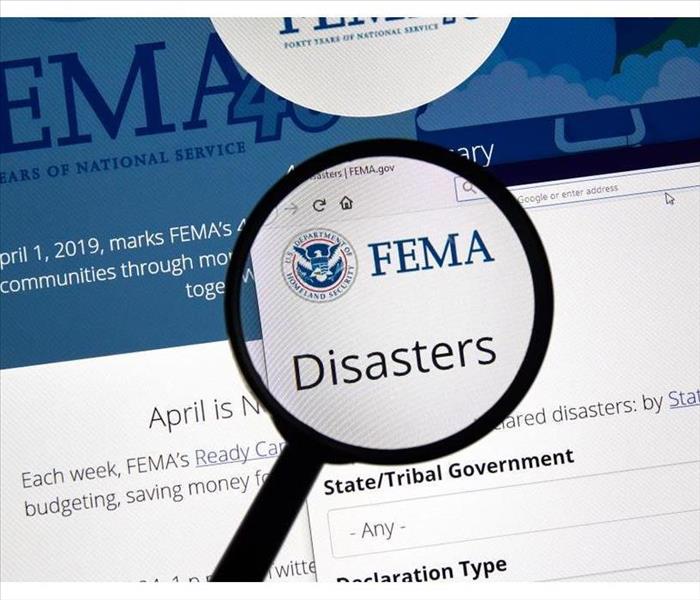 Organizations like FEMA are there to help with grants that may not cover everything but still make recovery easier.
Organizations like FEMA are there to help with grants that may not cover everything but still make recovery easier.
FEMA's Role in Flood Recovery
When a natural flood event happens in Elmwood, RI, even uninsured homeowners don’t have to weather the financial burden and recovery. A FEMA grant provides accepted households up to $36,000 for disaster relief. While this may not cover all the associated costs, it does provide relief. Before filing for a grant, it’s important to understand what the agency assists with.
Flooding Damage Relief
After an assessment of the damage is completed and a certified water damage restoration company has been secured to develop a restoration plan, you can expect the grant to help cover the costs for the following:
Roofs and Ceilings: If the storm wreaked havoc on the roof, these funds may be used to repair or replace affected materials.
Floors: While it may not cover replacement costs for new carpet or tiles, it will assist with any subfloor damage.
Windows: Broken windows related to the storm are included.
Property: The amount of property that is covered varies, but it may include the repair or replacement of HVAC systems, essential appliances and utilities.
Other Assistance
FEMA assistance comes in other forms besides ensuring your home is a safe and secure environment. Along with assisting with temporary relocation and related expenses, it may also help with child care and medical expense as well as replacing belongings, including:
- Clothing
- Job-required gear
- Educational tools
- Storage expenses
- Essential vehicle damage
- Disaster-related purchases
While these grants help with many different facets of the disaster, it’s also important to know that they will only be provided for up to 18 months. Typically, a household will receive around $5,000 a month to get their lives back on track.
Weathering a natural disaster comes with chaos and significant stress. While everything may seem hopeless, organizations like FEMA are there to help with grants that may not cover everything but still make recovery easier.
How to Prepare Your Commercial Property for a Winter Storm
4/26/2022 (Permalink)
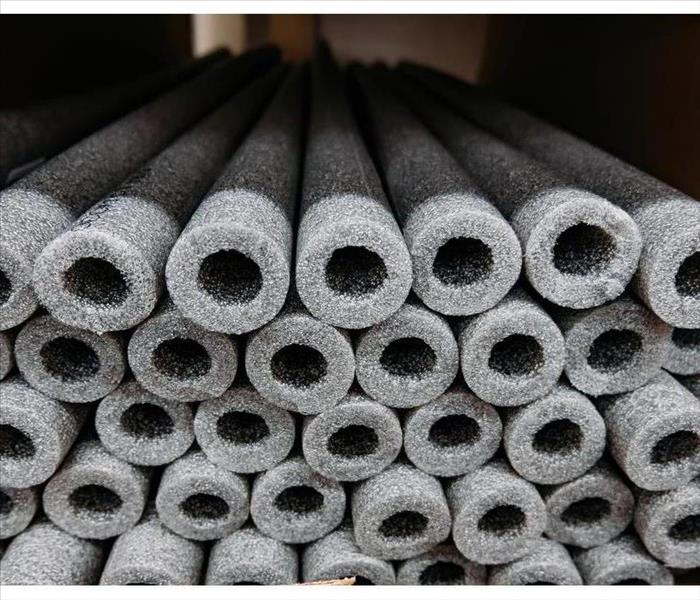 To prevent a pipe break, insulate around your pipes to keep the cold air out.
To prevent a pipe break, insulate around your pipes to keep the cold air out.
Keep Your Commercial Property Safe From a Storm
A winter storm could cause devastating damage to commercial buildings in Providence, RI. Freezing temperatures affect the construction materials of buildings by corroding, expanding, and tearing them. Materials that are affected by below-freezing temperatures include:
- Pipes
- Windows
- Roofs
- HVAC units
You can keep your property safe from bad weather by maintaining and updating your building as needed. Here are a few things you can do to keep your commercial property safe from a storm.
1. Maintain Your HVAC System
An HVAC unit has the power to heat your building and keep colder temperatures out. You will need to crank up the heat when temperatures drop. To keep your system maintained and functional before a winter storm, change the filters regularly and have the unit professionally cleaned at least once a year.
2. Check That Your Windows Are Properly Sealed
In older buildings, the sealant around windows becomes corroded with time. Make sure your windows are sealed well enough to keep out unwanted moisture. This prevents storm damage from ice and higher humidity levels in the building. It can also save you money on your electrical bill and ensures the HVAC system is not working harder than it needs to.
3. Insulate Around Your Plumbing
One of the main reasons insurance companies receive calls in the aftermath of inclement weather is damage from burst or broken pipes. A burst pipe occurs when water freezes inside of the plumbing, causing the pressure to increase and pipes to burst. To prevent a pipe break, insulate around your pipes to keep the cold air out. Remember to allow warm air to circulate around indoor water supply lines by opening cabinet doors. Any outdoor pipes should also be well insulated.
Prevent unwanted damage by keeping your property well maintained year-round. If you have experienced a burst pipe from a winter storm, contact a storm damage restoration service to aid in cleanup and repairs.






 24/7 Emergency Service
24/7 Emergency Service




